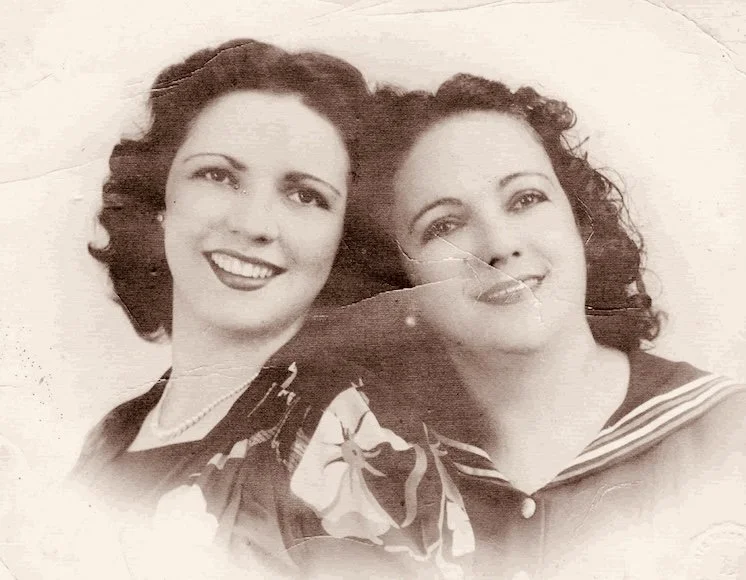The Family Mystery That Inspired the Novel (part 2)
In 2017, my aunt contacted a man who appeared as a second cousin on Ancestry.com. To our surprise, he replied that he’d heard rumors that his great-grandmother, Carmen, had abandoned a baby girl named Mirta in a Havana hospital in the early 20s. Still, he’d always assumed the story was more myth than fact. After pressing his mother and elderly aunts for information, our new cousin told us the following:
Carmen* was born in Havana at the turn of the 20th century to Federico and Caridad, a poor couple with a large family. When Federico died, Caridad was left destitute. Unable to maintain her large family, she placed her children in a charitable orphanage to be cared for until she had the means to do so herself (sadly, this was a common practice at the time). As her circumstances improved, Caridad retrieved her children two by two: the youngest and the oldest (so the latter would care for the former). Alas, Carmen, one of the middle children, never got her turn.
When Carmen was in her teens, she caught the eye of a young Spanish immigrant named Carlos Miyaya, who drove one of the city buses that went past the orphanage. The two married and had two daughters, Lidia and Mirta. (My grandmother had a sister!)
So far, all seemed normal, but at some point, when her children were very young, Carmen met a Cuban military officer named Teodoro and divorced Carlos. Teodoro agreed to marry her but insisted she give up her girls. Mirta, we’ve established, Carmen left at a hospital; Lidia, who was older, went to live with Carmen’s mother. Why would Carmen’s mother agree to raise Lidia but let Mirta be cast off? And if Carmen had so many siblings, why didn’t any of them step in to raise her? Most importantly, why didn’t the girls stay with their father? Oddly, our genealogical research has yielded no trace of Carlos Miyaya. Our great-grandfather seems to have disappeared into thin air. So many questions that will never be answered!
As an adolescent, Lidia found Carmen, who was now raising three children with Teodoro. Carmen agreed to let Lidia come for visits if she pretended to be her younger cousin. Her children should never know that Lidia was their sister. Lidia’s life, needless to say, was a sad one, relegated to the margins of her mother’s life.
Lidia remembered her younger sister and kept tabs on Mirta throughout her life. Legend had it that there was a mysterious woman in the back of the church when my grandmother married, and we had always assumed it was her mother. But now it seems likely that it was her sister. Although the two never spoke, it’s heartwarming to know that my grandmother was looked after by her older sister.
Lidia (left) and her mother/cousin, Carmen
Ancestry had more surprises in store. While our new cousin had always thought his grandfather Pedro was the son of Carmen and her second husband, Teodoro, the DNA match revealed that Pedro’s father was Carlos Miyaya. So Pedro was a full sibling to Lidia and Mirta!
How in the world did this happen? Pedro was born in 1926, three years after Mirta was born and over a year after she was abandoned. Was Carmen still sleeping with her ex-husband after she left her two daughters? Did Teodoro know that Pedro wasn’t his son? We’ll never know.
Lidia (second from the left) with her brother and sisters, who knew her as their mother’s cousin
On her deathbed, someone asked Carmen if she regretted abandoning her daughters. She said she regretted nothing.
As you can imagine, this was a lot for our family to process. On the bright side, my mom and aunts have bonded with their new cousins and have even celebrated holidays with their newly expanded family. On the darker side, the story was not particularly redeeming for my great-grandmother, Carmen. This was no starry-eyed girl forced to give up her lovechild by a tyrannical father, nor a destitute mother hoping to give her child a better life. Instead, she was a social climber who discarded two girls and never looked back.
Of course, knowing what I know now, I’m glad my grandmother never found out. She used to tell us she’d been found in a dumpster, like a piece garbage. Learning that her worst fears were true - she really had been unloved and unwanted - would’ve been devastating. But, then again, what if she had discovered the truth when she was younger? What if she’d had the chance to process it? How might her life have been different? These are the questions I am exploring through the novel.
* I am omitting surnames to maintain her family’s privacy.

